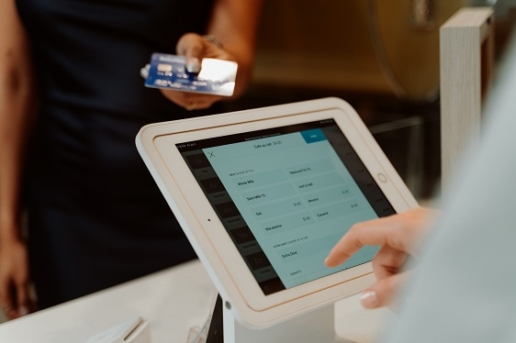They build, repair, deliver, care for, advise, drive our trains…: Frontline Workers (FLW) are often customers’ first contact with a company and its products. They represent about 80% of the world’s workforce [1] but they have often been forgotten in the digital transformation process…
Integrating FLW into the Workplace digitalization is one of the key challenges for the years to come. FLW were initially given second place in the digital transformation process because they were more complicated to deal with due to their varying situations, and also because of an often-limited market offer. Digitalizing FLW is now becoming a priority for business and IT departments, but it can be long and expensive, sometimes to the point of discouraging the operational employee, who is then tempted to find solutions by themselves.
As a result, Shadow IT initiatives have multiplied (use of computer systems, devices, software, applications and/or services without the agreement of the IT department). However, this approach has limitations, especially in terms of security and long-term viability. One of the most appealing solutions is to take advantage of No/Low Code (NLC) technologies, which require little or no programming.
NLC solutions are a simplified form of software or application development that enables the delivery of professional content without requiring skills in programming languages. NLC solutions are accessible to “non-experts” and therefore allow quick, simple, low-cost, and agile development of business applications: the perfect solution for FLWs who are often very “resourceful”!
Low Code for Frontline Workers: a great opportunity
78% of managers believe that to remain competitive, their frontline workers need to be more connected and empowered with technology and information (Harvard Business Review). Decision-making is increasingly based on data and frontline workers are precisely those who need to be properly informed in the field, as their choices and actions directly impact customer relations or operations.
Digitalizing them becomes a necessity in order to improve their performance, comfort, safety at work and communication in the field (see the key issues in our previous article on frontline workers). This challenge must be faced by giving them the flexibility that their job requires: the digitalization of FLW will only be a success if they are provided with the right tools that fit their way of working.
FLW have very different jobs, but we can consider three main categories: industry agents, field agents and sales agents. Within a company, it is common to have FLW belonging to these three categories with completely different needs and constraints. Therefore, it was very complex for the IT department to provide standard and common solutions addressing everyone’s challenges.
FLW have the best knowledge of what they need, and they are the ones who know the critical data and internal processes. Therefore, they are the most relevant people when it comes to creating an application or a service that they will use. Thanks to NLC applications, each front-line business can build its own tool (sometimes several dozen applications within the same company) without losing synergy and overall consistency, since data remains shared within the company. The risk of creating independent silos and losing efficiency is then reduced. This technology enables the easy delivery of highly customized applications that rely on common standards, therefore bringing synergy levers between the different applications.
No/Low Code allows the quick development of a concrete solution or a working base that can then be improved and completed by developers. This means that business units can quickly develop functional applications or POC (Proof of Concept) to show their IT department what they need in the field, even if they have to make further improvements with experts later on. Thanks to No/Low Code, it is now possible to quickly optimize activities to free up time for the FLW… and for the IT department, who can then focus on more complex projects! Digitalization or automation of processes becomes easier and requires less effort, so the return on investment is easily achievable.
As an example, Wavestone assisted a luxury tannery in the implementation of a Low Code application to track batches of hides. By scanning the QR code present on the piece, the operator can track its status and access a list of tasks that have been completed, tasks that are still in progress, and tasks to be accomplished, as well as the skin defects. Previously, tanners used to pass a paper tracking sheet from hand to hand, which increased the risk of not having the right version or losing information if the paper got lost. Moving to a mobile application has given FLW access to real-time data which enhances their performance.
Nowadays, there are many solutions that offer No/Low Code possibilities. One of these solutions is Microsoft Power Platform which is popular in many companies thanks to the wide deployment of Office 365.
Low Code within companies: a governance to establish
No/Low Code stimulates employee innovation, enhances productivity, and provides the IT department with the right tools to quickly deliver solutions that are adapted to each FLW. One of the challenges of implementing No/Low Code will be to bring cohesion and discipline to the execution, in order to limit the known risks of Shadow IT related to security and GDPR data compliance for example. Gartner estimated in 2020 that one third of cyberattacks would target Shadow IT.
Parallel computing is already well established and should not become an additional challenge. To keep these initiatives under control, IT departments need to put measures in place to regain control over the use of IT tools. The establishment of a governance for these No/Low Code topics allows the movement from Shadow IT to Citizen IT (thanks to the various tools provided by the IT department, end users can develop an application). For the companies that Wavestone has supported, the creation of this governance enabled them to break down some obstacles with the IT department and reinforce traditional IT.
Building a real No/Low Code offer requires better communication between the IT department and the business units, especially those who are furthest from the IT system, such as the frontline workers. For an IT department, positioning itself as a partner and supporter of a project is a key factor for success. This helps better identify the Citizen Devs and therefore capitalizes on the resources produced, while maintaining a certain level of compliance with what is produced.
Beyond setting up a governance, we are convinced that to get the most out of No/Low Code, you need to know how to combine self-service and customized support. This gives frontline workers the opportunity to create their own service by defining its main principles (architecture design system, capitalization, etc.) and positioning the IT department as a real partner on certain projects.
Data security and compliance rules are most certainly the biggest challenge in the implementation of this governance. Not all Citizen devs are aware of data management best practices to avoid duplication, data loss and to ensure compliance with internal policies and regulations. No/Low Code cannot be used for all purposes and with all types of data. Indeed, some security and compliance rules can be restrictive. For instance, the location of stored data, the security level of the database, the type of data collected and its purpose. These rules guarantee a safe and good use of data, but they also tend to reduce malicious acts. Violating these constraints inevitably creates vulnerabilities and severe legal risks for the company.
To face these risks, the implementation of a governance system must be handled as a real transformation project. Like any other employee, FLW’s must be made aware of the main existing challenges, the rules to be respected and the innovative potential of No/Low Code. Raising FLW awareness about data is essential. Also, the creation of communities and ambassadors within the FLW population are real assets to boost adoption. The implementation of real communication and listening bridges will encourage the emergence of news needs and enhance FLWs commitment.
The digitalization of Frontline Workers: a competitive lever for organizations
To remain competitive, companies must make it a priority to digitalize the work environment and processes of their FLWs, in order to provide them with the real-time information they need to work, and consequently improve operational excellence and customer service.
If the objective is to empower frontline workers in the design of applications, it is essential to define a framework for these practices to guarantee the success and security of projects.
The implementation of these new operating methods must be combined with strict governance and must be treated as a global transformation project: training employees on the challenges linked with data, defining internal rules within the IT department, sharing experience and knowledge, providing or sharing templates, charters, etc.
Of course, it is possible to let this go and wait for the next solution. Microsoft announced at its Build 2021 conference that No/Low Code might only be a temporary solution, while waiting for Artificial Intelligence (AI) to develop applications on its own based on specifications written in natural language by FLWs. Are you ready to make this bet?






